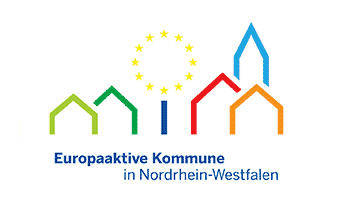Inhalt
Historischer Rundweg - Board 19
Marienwasser Monastery
The Franciscans taught local farm-children and engaged actively on a social and charitable level in the community.
Description
Today’s „Marienwasser“ farmhouse lies on the road to Siebengewald in the Netherlands, not far from the Baaler Bruch quarry. No visitor today would get the impression that a former monastery was located here: The residence and farm-buildings look just like any other typical farmhouse in the landscape. There is a room in the house which used to be the former refectory and still has remnants of a stucco ceiling with a cartouche in the form of those typical of the early 18th century above one of the doors.
Establishment
In 1413 former Weeze vicar Alard Roffard, apparently made the decision to establish a monastery in Weeze for holy brothers „ordinis tertiare regulae Sancti Francisci“ (Third Order of St. Francis, in short: Tertiaries) while on his way to Cologne and during a stop-over in the St. Nicolas Monastery near Dyck Castle in today`s County of Neuss; in 1461 the old bourgeois residence „in gen Mulray“, also known as “Mulrade” was purchased. A monastery and chapel were erected on the estate grounds with permission from Cologne’s Archbishop Dietrich von Moers. Due to its rather damp location the monastery was given the name “Maria ad Aquas“, or in lower German “Marienwater“. In 1462 the chapel and three altars were consecrated by the supreme prefect of the Franciscans of the diocese of Cologne P. Gilbert von Ankenen from the St. Nicolas Monastery. Under the leadership of P. Gottfried Boegelmann from Hüls three padres and five monks moved into the location, which was consecrated in the name of the Holy Jodokus. The St. Nicolas Monastery contributed 800 uplands Guilders towards the erection and furnishings. In 1464 Dietrich, Master from Gruesbeke, signed over the estate “in gen Mulray” to Father Goswin.
Social commitments
In 1659 the Earl of Hertefeld gave the Franciscans from Marienwater permission to teach children in the farming community near the St. John Chapel; the monks continued to be socially engaged and charitable.
Secularization and sale
By the time of the secularization in 1802 the Monastery counted 12 monks. The last Prior, Johannes Lüskens, managed to accrue a large sum of money before the annulment of the Monastery, which he used to sustain the brothers and finance the founding of the parish in Wemb in 1804. In 1804 the Monastery was sold to Madame Sinsteden of the Graefenthal Estate near Asperden for 6,000 Francs. In 1821 Baron Max von Loë from Allner Castle near Hennef on the Sieg River was the owner of Marienwater; in 1864 the land register listing was changed to Max Earl von Loë of Schloss Wissen. In 1836 the former monastery with the Bollenhof and Großer Graf farming estates was uplifted in status to a partial knight’s estate which provided the right to a seat in the state parliament. In 1874 the monastery’s church was, as a result of its dilapidated state dismantled; the pulpit and monstrance found their way to the Heilig Kreuz (Holy Cross) church in Wemb, the church door to the catholic church in Hülm and various oil paintings remained on the estate or went to the parish in Wemb.
Monastery property
Thirteen farms and plots of land, some of which were outside the municipal borders, belonged to the monastery estate. According to the land register from 1732 the Monastery owned, alongside the directly adjoining land (60 hectares), the farming estates Petershof (21 hectares) and Hoolshof, which were situated within today’s municipal boundaries. On top of that the ‘große Bruch’ (big quarry, 31 hectares) and ‘Torf-/Veengebiete’ (peat and natural areas, 14 hectares) were also assets owned by the Monastery.
Prior Johann Lüskens, from 1804 to 1816 the first vicar in the newly-founded parish of Wemb (painting).
The pulpit from the monastery church from 1620 depicting the four evangelists and on the rear the Holy St. Francis.
Imprint
Content: Municipality of Weeze, 2014
Photographs: Municipality of Weeze, Astrid Basten
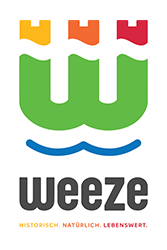

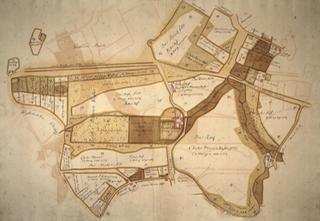
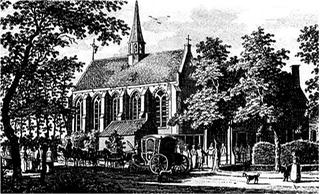
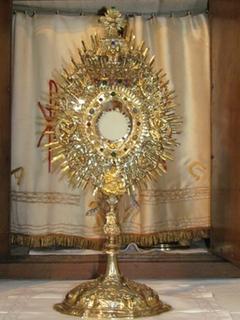
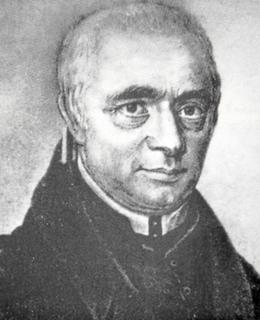
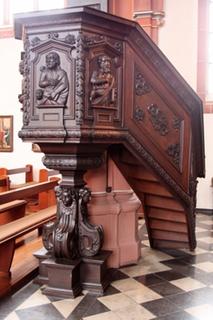
 02837 9100 (Zentrale)
02837 9100 (Zentrale) info@weeze.de
info@weeze.de Facebook
Facebook